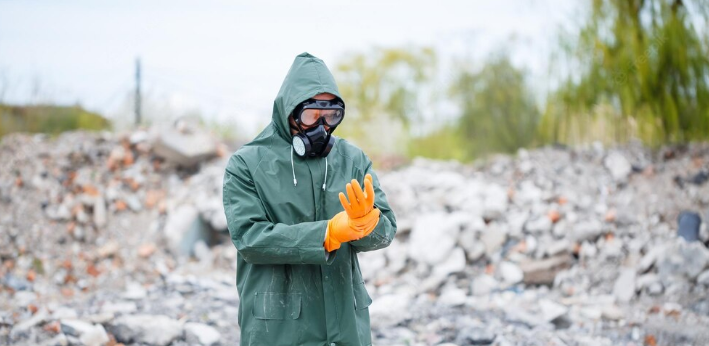The Hazardous Waste Management Process involves the collection, storage, transportation, treatment and disposal of hazardous waste. The process is designed to ensure that the public is protected from the health effects of hazardous wastes.
Hazardous Waste Management Process
The process of hazardous waste management involves the following:
- Collection of hazardous waste– This can be done by individuals or businesses who have a permit to handle hazardous waste. Hazardous wastes generated by homes or businesses are collected by a special collection vehicle (RCV). The RCV will take the waste to its destination where it is then treated or disposed of at either a permanent or temporary landfill site.
- Storage of hazardous waste- Hazardous wastes are stored in containers until they are collected by an RCV for transport to an approved treatment facility for proper disposal. The containers should be placed in a secure area away from public access areas such as roads and parking lots. They should also be labeled with their contents so that workers know what they are transporting and how many containers there are in total.
- Transportation of hazardous waste– When transporting hazardous wastes between facilities, you must follow DOT regulations for safety and security measures such as locking all doors and windows before leaving your vehicle unattended for any length of time; adding reflective tape on your mirrors if parked
The following are some of the things that you should keep in mind while designing your hazardous waste management program:
Identify sources of hazardous waste generated from business activities: You need to identify all sources of hazardous waste generated from your business activities. Identify them in detail so that you can monitor them regularly for any accumulation or spillage.
- Choose appropriate sites for disposal: It is necessary to choose appropriate sites for disposal because there are certain precautions required when disposing off chemicals or other substances at different locations. These precautions vary from one place to another depending upon local laws and regulations.
- Ensure proper transportation procedures: You must ensure proper transportation procedures for hazardous wastes before they reach their destination. In case of any spillage during transport, you must provide adequate isolation facilities for safe storage until it is transported again.
Regulations for Specific Wastes
Specific wastes are defined as any waste that has an individual identifier, such as a name or code number, which can be used to identify and track the source of the waste. The following wastes are considered specific wastes:
- Biohazardous wastes: Any liquid or solid waste that contains infectious organisms or cultures, which may be harmful if not properly disposed of. Examples include blood and body fluids; infected syringes; surgical dressings; chemicals.
- Chemical waste: Any liquid or solid waste that contains any chemical in excess of the limit prescribed by central regulations for safe disposal at landfills. Some examples include cleaning solvents, paint thinner, gasoline, oil and grease.
- Electronic scrap: Any electronic device that does not meet the definition of a hazardous waste under RCRA (Resource Conservation and Recovery Act) guidelines. This includes computers, televisions, monitors and other small electronics.
Stay With Tech Crams For more Updates and information

